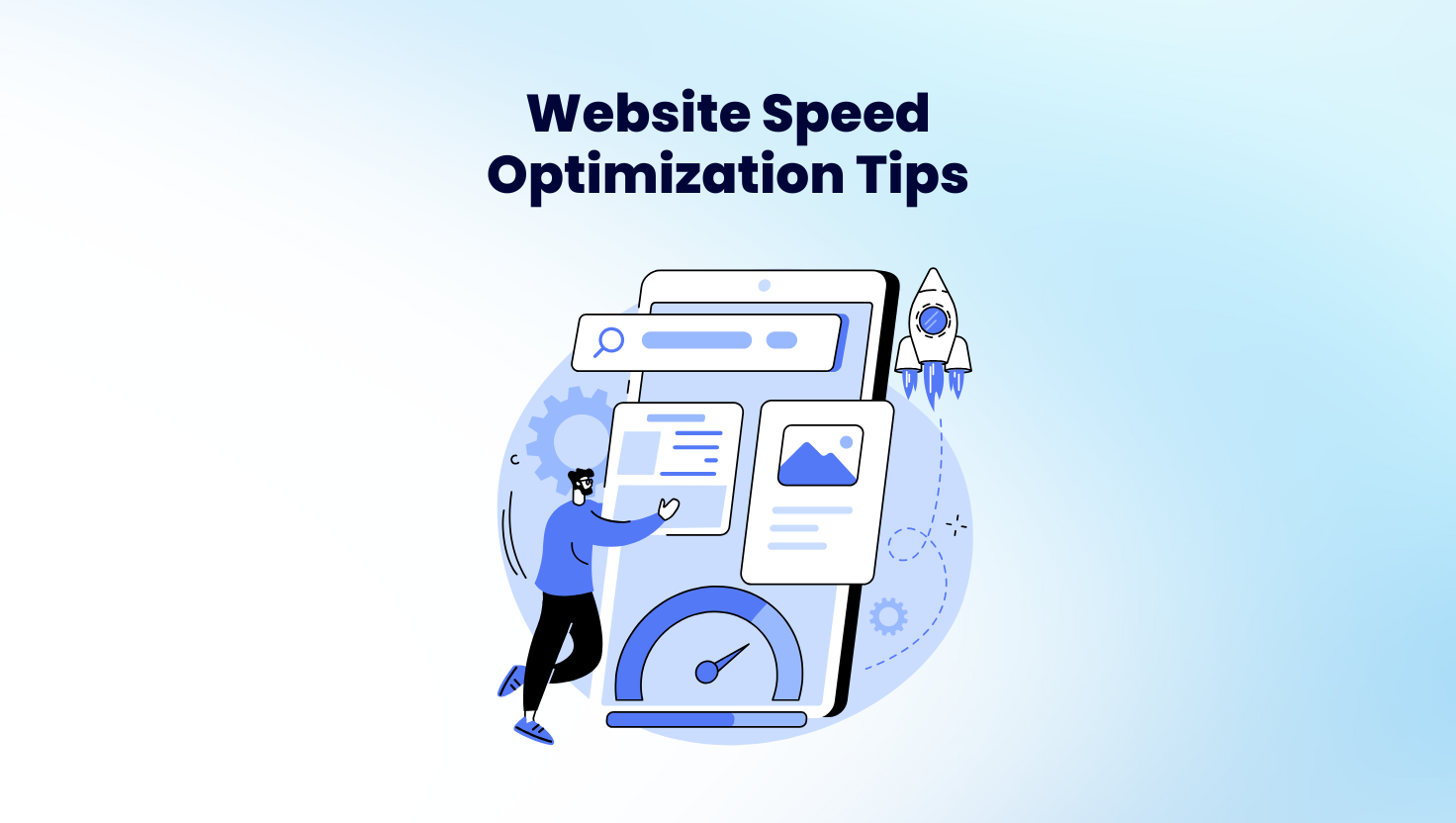
24 Feb 7 Optimization Tips for Speeding Up Your Website
A slow website can frustrate users, reduce engagement, and even impact sales. Speed is crucial for maintaining a positive user experience and ensuring that visitors stay on your site longer. Whether you run an e-commerce store, a corporate website, or a content-based platform, optimizing your website’s performance should be a top priority.
This article will cover why website speed matters and provide seven effective optimization strategies to enhance performance and boost user engagement.
Why Website Speed Matters
A fast-loading website provides multiple benefits:
- Improves User Experience: Visitors expect pages to load quickly. Slow load times lead to frustration and abandonment.
- Boosts Search Engine Ranking: Google uses page speed as a ranking factor, meaning slow websites may rank lower in search results.
- Increases Conversions: Studies show that a 1-second delay in page load time can reduce conversions by 7%.
- Enhances Mobile Performance: With more users browsing on mobile, fast loading speeds ensure a smooth experience across devices.
seven practical strategies to speed up your website
1. Optimize Images for Faster Load Times
Images often make up 60% or more of a webpage’s total size. While high-quality visuals are essential for branding and engagement, large image files slow down your website.
How to Optimize Images:
- Compress images using tools like TinyPNG, ImageOptim, or Squoosh.
- Use next-gen formats such as WebP, which offers smaller file sizes without quality loss.
- Implement lazy loading so images only load when they appear on the user’s screen.
- Use responsive images to ensure the right image size is delivered to each device.
2. Reduce HTTP Requests
Every time a user loads your website, their browser requests files from the server (images, scripts, CSS files, etc.). More requests mean longer load times.
Ways to Minimize HTTP Requests:
- Combine CSS and JavaScript files to reduce requests.
- Use CSS sprites to merge multiple images into one file.
- Remove unnecessary plugins and scripts that slow down loading.
Reducing requests leads to faster page rendering and better user experience.
3. Enable Browser Caching
Browser caching stores static files (CSS, images, JavaScript) on a user’s device so that the next time they visit, the browser loads them from local storage instead of re-downloading.
How to Enable Caching:
- Modify your .htaccess file to set caching rules.
- Use caching plugins like WP Rocket for WordPress.
- Set longer expiration dates for static assets.
Caching reduces server load and page load time, improving performance for returning visitors.
4. Use a Content Delivery Network (CDN)
A CDN (Content Delivery Network) distributes website files across multiple data centers worldwide. When a user visits your site, the content is served from the closest server, reducing latency and improving speed.
Benefits of a CDN:
- Reduces server load by spreading traffic across multiple locations.
- Improves speed for global users by minimizing the distance data has to travel.
- Enhances security by protecting against DDoS attacks.
Popular CDNs include Cloudflare, Amazon CloudFront, and Akamai.
5. Minify and Optimize Code
Messy, unoptimized code increases file sizes and slows down rendering. Minification removes unnecessary characters, spaces, and comments, making CSS, JavaScript, and HTML files smaller.
How to Minify Code:
- Use tools like CSSNano, UglifyJS, and HTMLMinifier.
- Remove unused CSS and JavaScript to prevent unnecessary loading.
- Enable Gzip compression to reduce file sizes before transferring them.
By optimizing your code, you can significantly improve loading times.
6. Choose High-Performance Hosting
Your hosting provider plays a crucial role in website speed. If you’re using shared hosting, your website shares resources with multiple sites, which can slow down performance.
Hosting Optimization Tips:
- Upgrade to a VPS or dedicated hosting for better speed.
- Use cloud hosting solutions like AWS, Google Cloud, or DigitalOcean.
- Select a provider with SSD storage for faster data retrieval.
- Optimize your database queries to reduce load times.
At PT KDN, we provide high-performance hosting solutions to ensure your website runs smoothly without downtime.
7. Fix Render-Blocking Resources
Render-blocking scripts (like JavaScript and CSS) delay page loading by forcing browsers to download and execute them before rendering the content.
How to Fix This Issue:
- Defer JavaScript loading to allow content to load first.
- Use asynchronous loading for non-critical CSS and JS files.
- Prioritize critical content using techniques like Critical CSS.
By fixing render-blocking issues, you create a faster and smoother experience for users.
Advanced Optimization Techniques
Beyond these fundamental tips, consider these advanced techniques for even better performance:
1. Database Optimization
- Regularly clean up old data, spam comments, and unused tables.
- Use database optimization tools like WP-Optimize for WordPress.
2. Prefetching and Preloading
- DNS prefetching speeds up external content loading (fonts, third-party APIs).
- Preloading resources ensures important assets load sooner.
3. Mobile Optimization
- Ensure your website is mobile-friendly and responsive.
- Implement AMP (Accelerated Mobile Pages) for faster mobile performance.
How PT. KDN Can Help Optimize Your Website
Website optimization requires expertise and ongoing monitoring. PT. KDN specializes in:
- Custom web development with performance optimization.
- Reliable and high-speed hosting solutions tailored to your needs.
- Ongoing website maintenance to ensure consistent speed.
- Security enhancements to protect against cyber threats.


Sorry, the comment form is closed at this time.